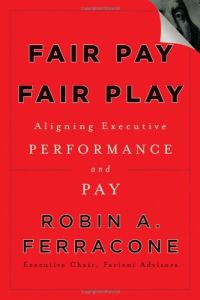Join getAbstract to access the summary!

Join getAbstract to access the summary!
Robin A. Ferracone
Fair Pay, Fair Play
Aligning Executive Performance and Pay
Jossey-Bass, 2010
What's inside?
Despite popular opinion, not all CEOs are unjustly overpaid. Now there’s a way to find out which ones are.
Recommendation
Given increased public and government scrutiny of executive pay, corporate boards of directors are under more pressure than ever to implement reasonable, competitive compensation packages for their senior managers. Robin A. Ferracone now provides firms with the analytical tools they need to compare their practices with those of other firms and to understand how to set “fair pay.” Using her 30 years of experience as an executive compensation consultant, Ferracone offers a relatively simple concept – “pay for performance” – while outlining the actual complexity underlying the idea. She explains the detailed mathematics of deriving critical statistics, including total shareholder return and performance-adjusted compensation. Her case studies and examples of corporate largesse offer readers welcome relief from intense statistical analysis, even though they help sell her “Alignment Report” as the prescription for compensation committee woes. Still, getAbstract applauds her thorough research and recommends her findings to board members, senior executives and human resources professionals eager to pay – and play – fairly.
Summary
About the Author
Robin A. Ferracone founded and chairs Farient Advisors LLC, consultants in executive compensation. She has advised corporations on executive pay issues for more than 30 years.

















Comment on this summary